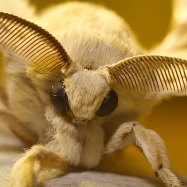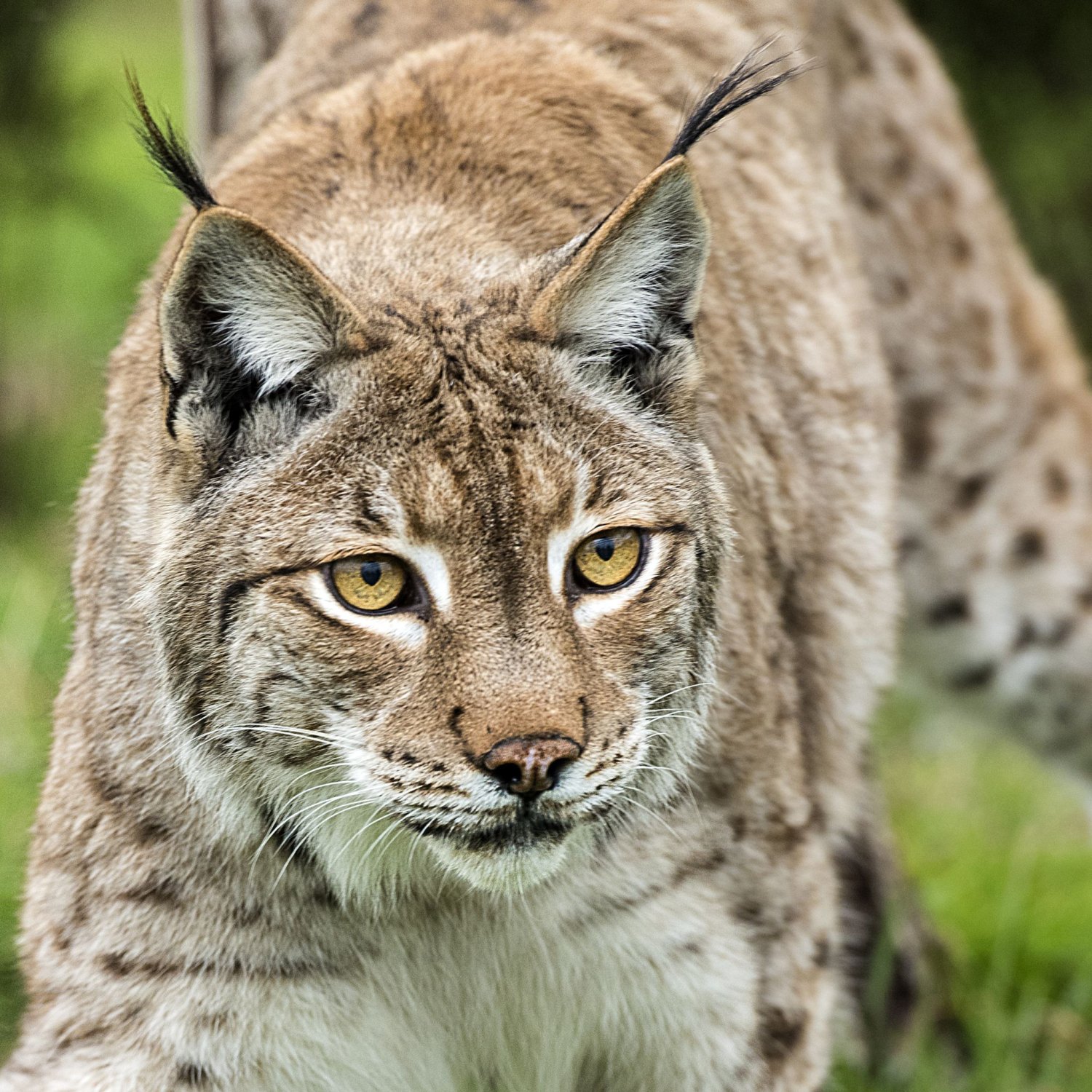
Lynx
80 to 130 centimeters
The elusive and majestic Lynx, found in Eurasia, belongs to the Felidae family. With a medium-sized body, long legs, and a short tail, these feline predators can reach lengths of 80 to 130 centimeters. Keep an eye out for this beautiful creature on your next nature hike! #Lynx #Eurasia #Felidae
Animal Details Summary:
Common Name: Eurasian Lynx
Kingdom: Animalia
Habitat: Forests, mountains, and grasslands
The Majestic Eurasian Lynx: A Closer Look into this Elusive Predator
Deep in the forests of Eurasia, a predator roams silently – the Eurasian lynx. This majestic feline, also known as the Lynx lynx, is a powerful and elusive creature, with a wide geographical distribution and a fascinating set of qualities that make it stand out among other animals in its family. With their distinctive physical appearance and unique way of life, the Eurasian lynx has captured the attention of nature enthusiasts and researchers alike. Join us as we take a closer look into this magnificent predator and uncover the secrets of the Lynx lynx Lynx.A Brief Introduction to the Eurasian Lynx
The Eurasian lynx belongs to the kingdom Animalia, the phylum Chordata, and the class Mammalia. As part of the order Carnivora and family Felidae, these fascinating creatures share common physical characteristics with other big cats, such as sharp retractable claws, long canine teeth, and excellent hunting skills. However, the Eurasian lynx stands out with its unique traits, making it a truly remarkable animal to study and admire.Habitat and Distribution
The Eurasian lynx is mainly found in forests, mountains, and grasslands, thriving in areas where prey is abundant and cover is readily available. They have a vast geographical distribution, with the majority of the population inhabiting Europe, Siberia, and Central Asia. However, these elusive creatures are also spotted in Germany, where they are believed to have originated from. Despite being found in these regions, they are scarce and challenging to spot, making them a rare and secretive animal in many ways.Feeding Habits of the Eurasian Lynx
As a carnivorous animal, the Eurasian lynx feeds primarily on other animals, such as deer, boar, and smaller prey like rabbits and hares. They are expert hunters, using their excellent vision, sharp hearing, and impressive agility to hunt and pounce on their prey Larder Beetle. One of the most interesting things about the Eurasian lynx is that they have a unique hunting style – they prefer to ambush their prey, quietly sneaking up on them and then attacking with a swift leap, rather than chasing them for long distances.Physical Characteristics and Appearance
The Eurasian lynx is a medium-sized feline, with a slightly stocky build and long legs. Their size and weight vary depending on the region they inhabit, with males being larger and heavier than females. On average, the Eurasian lynx measures around 80 to 130 centimeters in length and weighs between 18 to 30 kilograms. They have a characteristic brown fur with dark spots, providing excellent camouflage in their natural habitat. This unique fur coat also helps them regulate their body temperature in harsh weather conditions, a quality that is essential for their survival in the wild.The Secretive Nature of the Eurasian Lynx
One of the most intriguing qualities of the Eurasian lynx is their elusive and solitary nature. These felines are territorial animals, and each individual marks and defends its own territory, which can range from 20 to 400 square kilometers. This territorial behavior also extends to their tendency to avoid humans and other animals. The Eurasian lynx is a solitary creature, only coming together with other individuals during the breeding season. They are known to be quite elusive, making them challenging to study in the wild.The Unique Relationship between Humans and Eurasian Lynx
Throughout history, the Eurasian lynx has sometimes been a source of concern for humans. Due to their predatory nature, they have been feared and hunted in some regions, leading to a decline in their population. However, as we become more aware of the importance of preserving nature and wildlife, efforts have been made to protect and even reintroduce the Eurasian lynx to their natural habitat in areas where they have been wiped out. This has led to some success, with the population of the Eurasian lynx slowly increasing in some European countries.The Significance of the Eurasian Lynx in the Ecosystem
The Eurasian lynx plays a crucial role in maintaining balance in the ecosystem. As a top predator, their presence can help control the population of herbivores, preventing overgrazing and preserving the natural balance of their habitats. Their unique hunting style also helps keep prey species on alert, reducing their vulnerability to other predators. Additionally, the presence of the Eurasian lynx in the wild signifies a healthy ecosystem, as they thrive in areas with a rich and diverse wildlife population.The Impact of Climate Change on the Eurasian Lynx
Like many other animals, the Eurasian lynx is also facing the consequences of climate change. As the planet continues to warm up, the habitats of these elusive felines are shrinking, leading to a decline in their population. Their long-term survival depends not only on our efforts to protect them but also on making significant changes to halt climate change and preserve their natural habitat.The Bright Future of the Eurasian Lynx
Despite the many challenges faced by the Eurasian lynx, there is still hope for their future. With increasing awareness and conservation efforts, there has been a slow but steady increase in their population. Thanks to the elusive nature of these creatures, there is still much to learn about them, making them a subject of fascination and study for many researchers. As long as we continue to prioritize their protection and preserve their natural habitat, the Eurasian lynx has a chance to thrive and continue to be a vital part of our ecosystem.In Conclusion
The Eurasian lynx, also known as the Lynx lynx, is a truly remarkable animal, with its unique qualities and fascinating way of life. With their elusive nature, unique physical characteristics, and vital role in the ecosystem, they are a true wonder of nature. As we continue to dedicate efforts towards their conservation and preservation, we can ensure that the Eurasian lynx remains a part of our world, a symbol of strength and resilience in the ever-changing landscape of our planet.

Lynx
Animal Details Lynx - Scientific Name: Lynx lynx
- Category: Animals L
- Scientific Name: Lynx lynx
- Common Name: Eurasian Lynx
- Kingdom: Animalia
- Phylum: Chordata
- Class: Mammalia
- Order: Carnivora
- Family: Felidae
- Habitat: Forests, mountains, and grasslands
- Feeding Method: Carnivorous
- Geographical Distribution: Europe, Siberia, Central Asia
- Country of Origin: Germany
- Location: Eurasia
- Animal Coloration: Brown with dark spots
- Body Shape: Medium-sized with long legs and a short tail
- Length: 80 to 130 centimeters
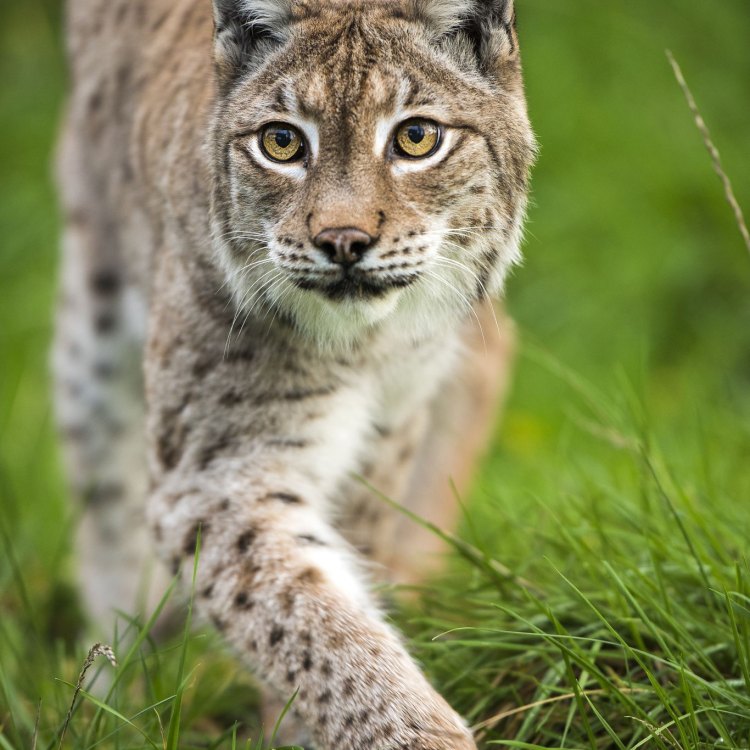
Eurasian Lynx
- Adult Size: 60 to 120 centimeters at the shoulder
- Average Lifespan: 10 to 15 years in the wild
- Reproduction: Sexual
- Reproductive Behavior: Mating season occurs between February and March
- Sound or Call: Lynx communicate through vocalizations including growls, hisses, and meows
- Migration Pattern: Not migratory
- Social Groups: Solitary
- Behavior: Nocturnal and secretive
- Threats: Habitat loss and fragmentation, hunting, and illegal trade
- Conservation Status: Least Concern
- Impact on Ecosystem: Lynx play an important role in controlling populations of prey species
- Human Use: Hunted for fur in the past
- Distinctive Features: Tufted ears and a short bobtail
- Interesting Facts: The Eurasian Lynx is the largest lynx species
- Predator: No natural predators
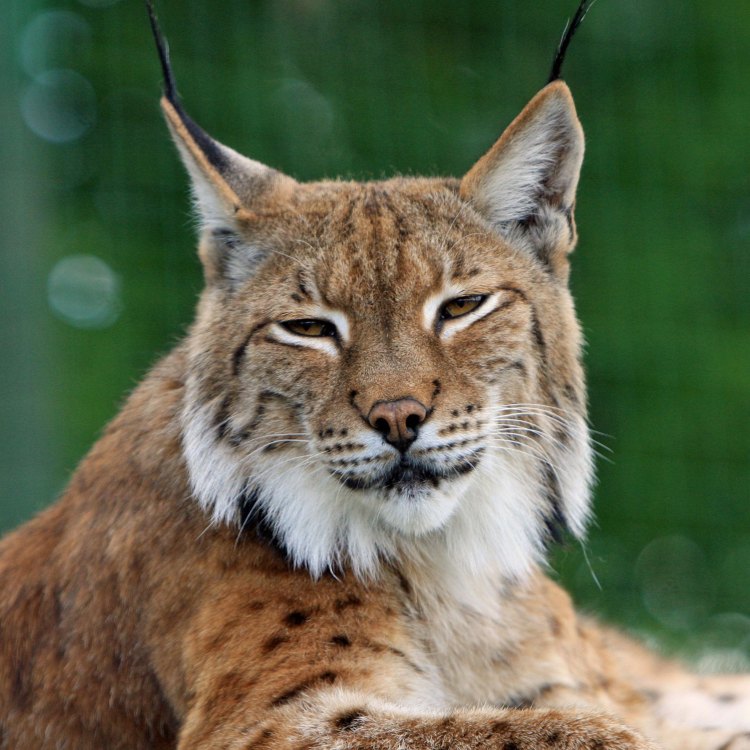
Lynx lynx
The Fascinating World of the Lynx: Surviving in a Changing Environment
The wild is home to many magnificent creatures, and the lynx is no exception. With their distinctive tufted ears, short bobtail, and elusive behavior, these felines have long captured the imagination of humans. But what makes the lynx truly unique are the adaptations they have developed to survive in their ever-changing habitats.Adult lynx can grow to be 60 to 120 centimeters at the shoulder, making them one of the largest felines in the world PeaceOfAnimals.Com. They are solitary creatures, and their average lifespan in the wild is 10 to 15 years. Despite their solitary nature, lynx do have a reproductive season, which occurs between February and March. During this time, they communicate primarily through vocalizations including growls, hisses, and meows to attract a mate.
One of the most interesting aspects of the lynx's behavior is their migration pattern. Unlike other animals, they are not migratory. This means that they remain in the same area throughout their lives, adapting to the changing seasons and conditions. This is made possible by their efficient hunting skills and ability to thrive in a wide range of habitats.
In terms of social groups, the lynx prefers to live a solitary life. They have adapted to this lifestyle by being nocturnal and secretive Longfin Mako Shark. This allows them to avoid detection by predators and humans alike. Interestingly, they also have no natural predators, making them an apex predator in their ecosystems.
However, despite their adaptive abilities, lynx still face many threats to their survival. Habitat loss and fragmentation due to human activities, hunting for their fur, and illegal trade are all major threats. This has led to the Eurasian Lynx, the largest of all lynx species, being listed as "Least Concern" on the International Union for Conservation of Nature (IUCN) Red List.
But what impact do lynx have on their ecosystems? As with any species, their presence is crucial to maintaining the delicate balance of the food chain. Lynx play an important role in controlling populations of prey species such as deer and rabbits, thus preventing overpopulation. This, in turn, helps to maintain a healthy ecosystem.
Humans have also had an impact on the lynx, as they have been hunted for their fur in the past. However, with increasing awareness and conservation efforts, the fashion industry has moved towards more ethical and sustainable practices, reducing the demand for lynx fur.
Apart from their distinctive features and behavior, there are many interesting facts about the lynx that make them even more captivating. For example, their short bobtail is not a result of a genetic mutation, but rather an evolutionary adaptation that helps them balance while running and climbing in the dense forest environments they inhabit. Additionally, the lynx's fur changes color with the seasons, from a grayish-brown in summer to a white or light grey in winter. This helps them blend in with their surroundings and remain undetected by predators and prey.
But beyond their physical features, the lynx has also played an important role in human culture and mythology. In Norse mythology, the lynx was believed to be a symbol of prosperity and was often associated with the gods. In Native American culture, lynx was a symbol of strength, agility, and wisdom.
In conclusion, the world of the lynx is a fascinating one. They have adapted to survive in changing environmental conditions, remaining elusive and solitary in their lifestyles. While they may not be as widely recognized as other big cats like lions and tigers, lynx hold a special place in our natural world. As humans, it is our responsibility to protect and preserve these magnificent creatures, ensuring that future generations can continue to marvel at their beauty and resilience.
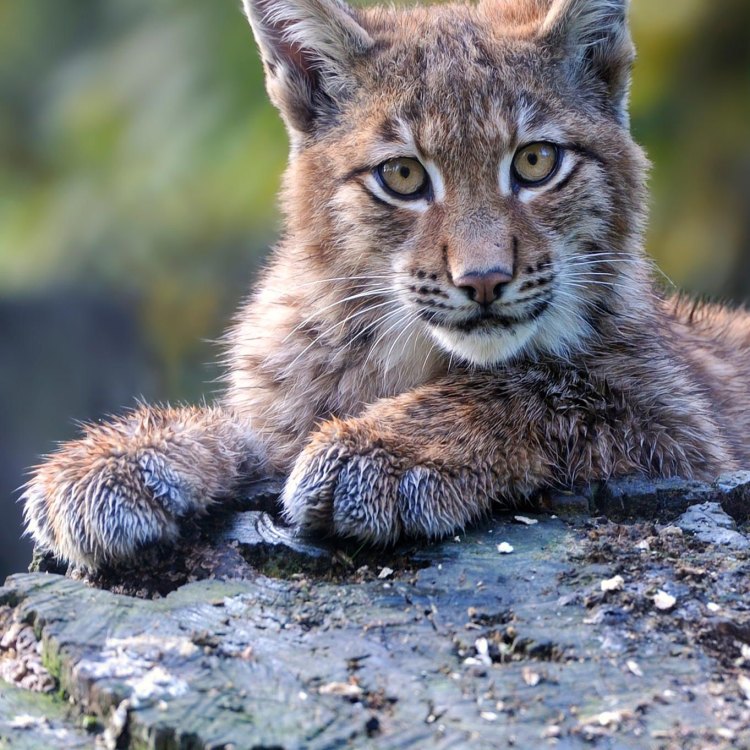
The Majestic Eurasian Lynx: A Closer Look into this Elusive Predator
Disclaimer: The content provided is for informational purposes only. We cannot guarantee the accuracy of the information on this page 100%. All information provided here may change without prior notice.



